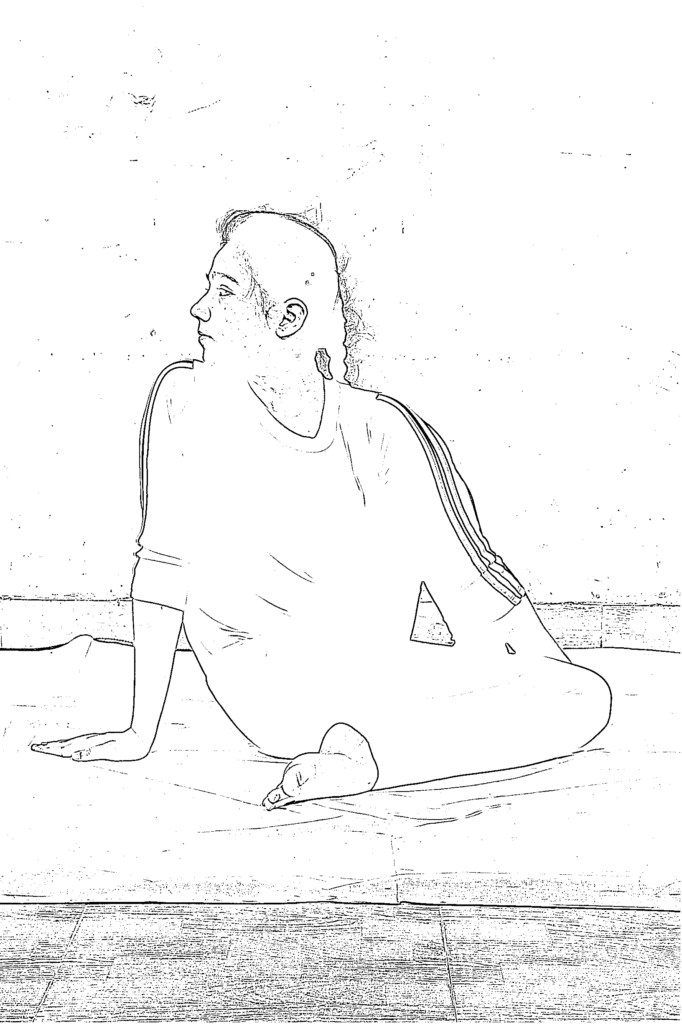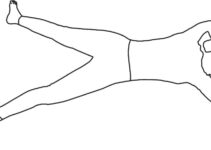
What is diabetes mellitus
In diabetes, the amount of insulin produced by the pancreas is reduced quantitatively, resulting in an increase of sugar in the blood, and excess sugar is eliminated through urine. Diabetes is considered a lifelong disorder by modern medical science; however, it can be controlled by changes in lifestyle and Alternative Medicines.
Diabetes Signs and Symptoms
- Sticky urine
- Frequent urination
- Frequent hunger
- Unquenchable Thirst
- Dryness and infection in the skin
- The weakness of eyesight
- Feeling of tiredness
- Delay healing of wounds
- Itching
- Weight fluctuation
- Burning of palms and soles
- Sweet taste to the mouth
- Low sexual urge
What are the leading causes of Diabetes?
- Genetics
- Age: > 80% of cases happen after 50 years and risk a considerable rise after 65 years.
- Nutritional Deficiency: Improper nutrition, low protein and fibre intake, and high intake of refined products cause diabetes.
- Obesity and Fat Distribution
- Overeating
- Sedentary Lifestyle: more prone to diabetes.
- Stress, Tension, and worries: blamed as the preliminary factor of the disease.
- Drugs like steroids, Dilantin, alloxan, streptozocin, and thiazide diuretics are known to induce diabetes.
- Excessive Use of Alcohol
- Insulin Deficiency and resistance
- Syndromes like Down’s and Turner’s may cause permanent diabetes.
- Infection caused by Virus: i.e. Strephylococci affects the pancreas.
- Sex: commonly with older males and females with multiple pregnancies.
- Hypertension: a close relationship with hypertension/High Blood Pressure and diabetes.
- Increased cholesterol level
- Diet rich in carbohydrate and fat
- Excess intake of oil and sugar
- High blood pressure
- Removal of the pancreas by surgery
Diagnosis of Diabetes
- Fasting Plasma Glucose (FPG) test: To test pre-diabetes and Diabetes, the patient asked not to eat anything for 8 hours. It is most reliable when done in the morning.
- Oral Glucose Tolerance Test (OGTT) tests blood glucose level after 8 hours of fasting + after 2 hours of drinking glucose to diagnose diabetes and pre-diabetes.
- Finger Stick Blood Glucose: Rapid screening test that may be performed anywhere.
- Glycosylated Hemoglobin Test: To measure high blood sugar levels lasting 120 days.
- Physical Examination
- Urine Sugar Test
- Urine Ketones Test
- C-peptide Blood Test
Complications of Diabetes
- Cardiovascular Disease: Increased blood sugar narrows down blood vessels and causes a heart attack or stroke.
- Kidney Problems: High blood sugar makes the kidney work more, leading to disorders.
- Bladder Control Problems for Women
- Erectile Dysfunction
- Hypoglycemia (Low Blood Glucose)
- Sexual and Urologic Problems
- Stomach Nerve Damage (Gastroparesis)
- Eye diseases: diabetes narrows down the retinal vein and causes Cataracts, Retinopathy, and Glaucoma.
- Infections: Increased sugar levels frail the immune system and become the factor for various infections.
- Nerve Damage(Neuropathy)
- Dental Problems
- Skin and Foot Disease
- Diabetic Coma
Top Yoga for diabetes management
Yogic practices aim to restore the health of the affected pancreas and help it make up for the deficiency of insulin secretion. Blood sugar is reduced significantly after Yogic treatment. And glucose tolerance is increased. Yoga improves the psychological makeup and general feeling of a healthy being. Yogic treatment may control diabetes within six weeks.
- Sirsasana (Headstand pose) revitalises the nervous centre and pituitary gland directly related to sugar control. Thus, it has a significant and positive influence on relieving the condition.
- Paschimotasana (Powerful pose) tones up the pancreas, spleen, and kidney. This Yoga pose helps to cure diabetes mellitus.
- Veerasana (Hero’s pose) is conducive to physical and mental equilibrium, thus relieving the feeling of tiredness and weakness.
- Dhanurasana (Bow pose) stimulates the pancreas and secretes the correct amount of glucagon and insulin at the right time, thus a good remedy for the disorder.
- Shalabhasana (Locust pose) aids in curing diabetes.
- Katichakrasana (waist rotating pose) helps lower the sugar level in the body and induces a beautiful feeling of lightness.
- Ardha matsyendrasana (Half spinal twist pose) cures diabetes.
- Mayurasana( Peacock Asana): People who have diabetes find this asana very beneficial as it vigorously stimulates the metabolic process.
- Bhujangasana( Cobra pose) stimulates the pancreas and helps in the proper secretion of insulin.
- Uddiyan Bandha is suitable for the overall functions of hormonal glands.
- Nauli (Navel String)
- Bhastrika Pranayama( Bellows Pranayama) improves digestion and helps to enhance the overall function of the body.
- Naddishuddhi Pranayama
- Meditation aids overall in lessening the signs and symptoms of Diabetes.
- Surya Namaskar(Sun Salutation) is also recommended to cure the disorder.
- Relaxation techniques like Shavasana, Makrasana, and Balasana are helpful for type 1 diabetes.
Ayurvedic cure for diabetes
The Ayurvedic treatment has more excellent application and importance in curing it. Ayurvedic diabetic medicine and herbs can cure type 2 diabetes, type 1 diabetes, IDDM, and NIDDM. Diabetic depression is not only shared in the adult population, but juvenile diabetes is also increasing daily. The various components and mixtures of Ayurveda help fight the condition.
- Juice of bitter gourd or Rose apple, Bel and Neem may be taken on an empty stomach daily. It is the best remedy for diabetes.
- Turmeric is a valuable remedy for it.
- Take twice a day before lunch and dinner the mixture of 1/2 teaspoon of ground bay leaf + 1/2 teaspoon turmeric + 1 teaspoon aloe vera gel; control sugar in the blood, thereby effective for the problem.
- 100 gm grind seeds of Methi + turmeric, 50 + white pepper, and a glass of milk, if taken twice daily, is a natural remedy for such patients.
- Amalaki Churna (500mg) + Turmeric Powder (500mg) + Naag Bhasma (125mg) may be taken with honey to reduce blood sugar and help pancreatic function.
- Taking a glass of water with the extract of (10 Tulsi leaves + 10 neem leaves + 10 Belpatras) on an empty stomach reduces the sugar content in the blood.
- Copper vessel water in the morning is also helpful.
- Bel leaves have the anti-diabetic characteristic; take its extract with black pepper.
- Garlic contains allicin, which reduces sugar levels and helps break cholesterol.
- The leaves of Jamun have the power to control the conversion of starch into sugar and are an excellent example of an Ayurvedic cure for the disorder.
- Onion has low sugar characteristics.
- The other useful herbs that are beneficial for diabetes are Jambhul, Gurmar, Sagar gota, Shilájit, Triphala, Gurmar Leaves, Nayanthara, and Sagar gotta
- Juice of bael leaf up to 14-28 ml. may be taken with 5 to 10 gm. of honey thrice daily. It is a beneficial remedy for diabetes mellitus.
- 12 gm. powder of bastard flower may be taken with 5 to 10gm. Raw sugar thrice a day. It helps to lower blood sugar.
- 14 to 28 ml. fruit juice of embolic myrobalan and the same quantity of turmeric juice to be taken thrice daily to get positive results.
- Powder of stem of Indian Sarsaparilla -1 part + Tamala leaf -1 part + and root of glycyrrhiza -1 part to be taken in 1 gm. dose with 50 to 100 ml. water twice a day.
- A decoction of equal parts of barks of white acacia + chair + nut of areca-14 to 28 ml., to be taken thrice daily.
Homeopathic medicine for diabetes
Homeopathy has a complete say in curing diabetes. Homeopathy, as such, has a vital role to play in the cure and management of diabetic patients. Diabetic patients who go for homoeopathy get rid of the life-long disease. Homoeopathy can be used effectively in the treatment of Hyperglycemia.
- Phosphorus: to stabilise blood sugar levels.
- Syzygium Jambolanum: reduces the level of sugar immediately; use five drops of it after every 6 hours.
- Aurum Metallicum: reduces the craving for sugar in the patients.
- Uranium Nitricum: improves nephritis problems.
- Arsenicum Bromatum: normalise excessive thrust and hunger, familiar with the disorder.
- Insulinum: helps to improve the functioning of the pancreas
- Phosphoric acid has a remarkable power to cure diabetes in the early stage.
- Lactic acid is a good remedy for such patients.
Unani for diabetes mellitus
Unani strongly believes the total cure of Diabetes is possible through energising the pancreatic cells.
- The black pepper, fennel, and juniper oil restores and rejuvenates the pancreas.
- Insulin stimulant oils include carrots, eucalyptus, fennel, geranium, and lemon.
Naturopathy for diabetes
Diabetes is a nutritional disorder characterised by an abnormally elevated blood sugar level and excretion of excess glucose through urine. It results from a lack of insulin, which leads to abnormalities in carbohydrate metabolism and the metabolism of protein and fat that leads to type1 diabetes and type2 diabetes. Nature cure has the power to control diabetes at the earliest.
- Mud Therapy is beneficial for hyperglycemic patients.
- Hydrotherapy: Hot and Cold Fomentation over the abdomen, Cold hip bath, Hot and cold hip bath, Wet abdomen pack, spinal bath. All these form an essential part of treatment. Enema thoroughly cleanses the colon and helps the bowel to assume typical characteristics.
- Bathing in cold water dramatically increases circulation and enhances the capacity of the muscles to utilise sugar.
- Massage Therapy helps to energise and revitalise the whole body.
- Sun Bath: Water kept in a brown bottle and exposed to sun rays for at least 8 hours in a half-cup; a dose twice a day after a meal is also found beneficial.
- Exercise, especially morning walks, is a good remedy for diabetic patients
Excellent home remedies for diabetes
- Bitter gourd is the most essential home remedy in controlling diabetes. Bitter gourd contains hypoglycaemic, which cures type 2 diabetes and type 1 diabetes. ½ cup of bitter gourd juice in the morning is one of the best remedies for it.
- Bengal gram (Chana) is suitable for chronic diabetes. Bengal gram shows promising results in glucose tolerance and urinary excretion.
- Use bitter melon in your diet to control blood sugar levels.
- Drink 1 cup of fenugreek (Methi) juice daily to reduce glucose levels. It is very effective in the treatment. It reduces the patients’ reactive hyperglycemia, glucose, serum cholesterol, and triglycerides.
- Indian gooseberry and orange contain vitamin C, which benefits patients.
- Indian gooseberry and bitter gourd juice stimulate the pancreatic cells and reduce blood sugar.
- five mango leaves + 1 glass of water left overnight; drink after filter to reduce sugar level.
- Grapefruit is a splendid food for the patient.
- Take curry leaves twice a day for good results.
- Take before lunch and dinner about ½ tsp each of ground bay leaf + turmeric + aloe vera gel; good to fight it.
- Honey + turmeric powder + dried gooseberry powder to show blood sugar level down.
- Diabetic patients should chew 4-5 Jambul fruit (Jamun) leaves in the morning and evening. It is an effective home remedy for diabetes.
- Chew 2 leaves each Neem and Bilva to minimise the condition’s impact.
- Overnight-drenched almond is also beneficial.
- Leaves of Basil + Neem + Belpatras + 1 glass of water help to cure it.
- Diabetic patients should take apple juice.
- Use of Garlic, Karela, Onion, and Soybean should be abundant in the diet to overcome sugar levels.
- Drink more water in the morning before exercise.
- Juice of Margosa leaves helps control it.
- String bean pod tea is an excellent natural substitute for insulin and is valuable in such conditions.
Diet plan for diabetes
The diet of a diabetic patient is of utmost importance. The goal of a diabetic diet is to avoid any surges in blood glucose by maintaining the ideal body weight through proper nutrition. The patients should follow three meals and three snack patterns in their diet plan. The main aim of a diabetic diet is to maintain blood sugar level (70-140 mg/dl), cholesterol level (200 mg/dl ), and blood pressure (120/80 mm Hg). The diet schedule for such a patient is as follows:
- Morning: Bitter gourd juice 1-2 ounces (40 ml)
- Breakfast: Skimmed Milk (250-400ml) or Buttermilk or Sprouted gram, Moong, Methi approx. 50 gm of Fresh Amla juice 50 ml
- Lunch: Roti( wheat + gram flour) 25-50 gm, green vegetables 250gm, Salad 50gm, Moong 25 gm Curd 150gm + 1 glass buttermilk
- Evening: Roasted gram 30 gm, Vegetable soup or one glass buttermilk
- Dinner: As in lunch, curd is not advisable at night.
Best fruits for diabetes
Some of the most beneficial food for diabetic patients is given below. Some foods are also to avoid as these may cause heart disease and increase high blood pressure
- Fresh fibrous fruits and vegetables are helpful.
- Soyabean, Bean, Turnip, Cucumber, garlic, Lauki, Bitter gourd, Spinach, Fenugreek, Bathua, Chaukie, Amla, Jamun, Bel, cabbage, tomato, and carrot.
Foods to avoid in diabetes
- Cakes
- Fast and junk foods
- Jaggery
- Ghee
- Butter
- Cold drinks
- Biscuits
- Dried fruits like badam
- Oil for cooking
Preventions for diabetes
With the help of a regulated diet, an alternative medicine system, and a proper exercise module, diabetes can be controlled and managed to a more significant extent.
- Avoid sugary substances /products altogether.
- The use of junk, oily, fried, and fat-enriched foods should be avoided.
- High-fibrous food should be preferred.
- Avoid non-veg.
- Avoid ghee, Vanaspati, refined flour, smoking, chewing of Jarda, and Gutka.
- Keep yourself away from stress, as it is the root of many diseases.
- Frequent and excessive eating puts you in danger.
- Apathy for exercise may put you in danger.
- Do healthy physical exercise along with Yoga and meditation
- Diabetic Lifestyle (Ayurveda Diabetes Treatment)
- Skip sleeping at day time
- Avoid alcohol
- Avoid smoking
- Take care of your ENT parts
- Follow exercise regularly
- Do Yoga
- Take extra care of your food
- Make your dietary chart





Why avoid sleeping during the day?
What are the signs of sugar diabetes and treatment.
Good suggestions
thanks